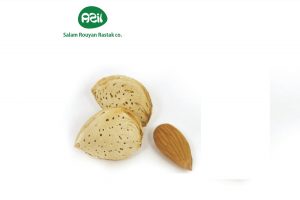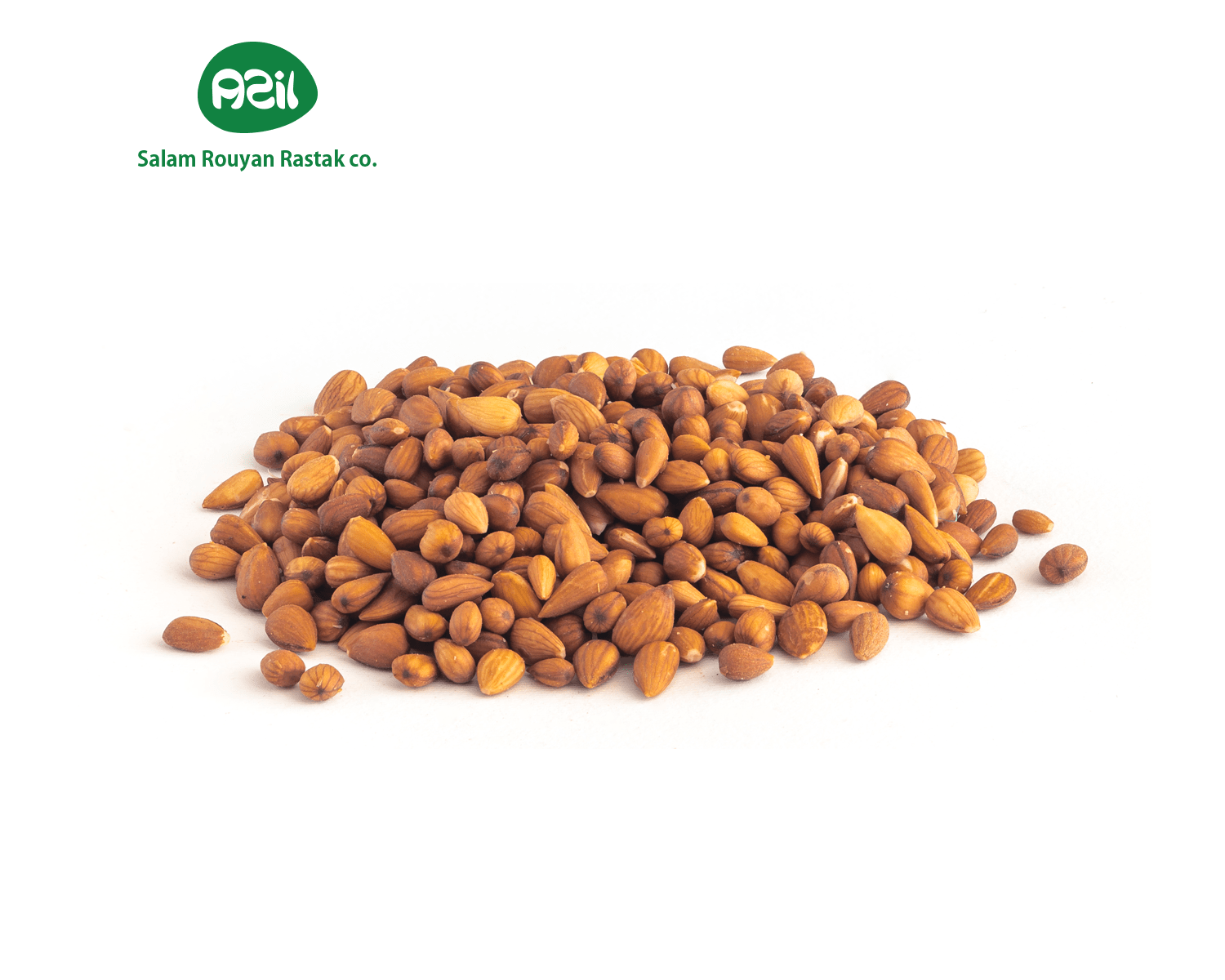Persian Almonds in Spring Morning Tea
Persian almonds, with their crisp goodness, elevate Iran’s spring morning tea ceremonies, honoring renewal. Known as “badam,” these nuts shine at 08:42 AM +04 on November 05, 2025. For example, hosts serve them during serene indoor rituals. This article explores how Persian almonds enhance spring morning tea ceremony traditions, their cultural significance, and their health benefits. We’ll also dive into their cultivation, preparation, and global appeal. As exporters of saffron, nuts, and more, we share Iran’s finest badam too. So, discover why these almonds are a ceremony treasure, how they’re used in Persian spring mornings, and why they’re cherished worldwide. Join us to explore this nutty gem and see what makes it a Persian seasonal essential this morning!
Introduction

Azil Organic Moheb Ali Almond
Persian almonds bring crisp goodness to Iran’s spring morning tea ceremonies, honoring renewal at 08:42 AM +04 on November 05, 2025. Iranians call these nuts “badam,” grown in regions like Chaharmahal and Bakhtiari, and they shine when hosts serve them during serene indoor rituals. This nutty gem adds a mindful touch to the season’s awakening. We export saffron, nuts, and dates, but this isn’t just about trade—it’s about their role in cultural grace. Therefore, this article explores how Persian almonds enhance spring morning tea ceremony traditions, their cultural significance, and their health benefits. Let’s uncover this elegant practice!
Persian Almonds in Tea Ceremony Snacks
In Persian culture, participants use Persian almonds as snacks during spring morning tea ceremonies. They often nibble badam to complement each sip. For instance, many keep this nutty gem in small bowls for quiet enjoyment. Also, they pair almonds with green tea to enhance mindfulness. This choice brings balance, so Persian almonds are a ceremony favorite.
Badam in Spring Morning Tea Ceremony Treats
Beyond snacks, badam plays a key role in Persian spring morning tea ceremony treats. Hosts roast Persian almonds to serve as a warm addition to the table. They also mix this nutty gem with honey for a sweet drizzle. Another idea involves blending almonds into a paste for a unique spread. These offerings often soothe attendees, showcasing seasonal harmony. As a result, this nutty gem enhances ceremony moments across Iran.
How Farmers Cultivate This Nutty Gem
Farmers carefully cultivate this nutty gem to ensure it’s ready for spring use. The process starts with almond trees blooming in late winter, so nuts ripen by early spring. They tend the trees in Chaharmahal and Bakhtiari with care to support growth in mountainous terrain. Then, they harvest badam when shells harden. Finally, they dry the almonds to preserve flavor for ceremonies. This method keeps Persian almonds fresh for rituals throughout Iran.
Preparing Persian Almonds for Tea Ceremonies
Communities prepare Persian almonds to shine in spring morning tea ceremonies. For example, they roast badam with rose petals to create fragrant snacks for the morning. They also blanch this nutty gem to remove skins for a smooth texture. Another method involves chopping almonds for mixing into sweets. Some even pack badam in decorative jars to maintain quality. Because of these preparations, this nutty gem elevates every ceremony moment.
Health Benefits of This Nutty Gem
This nutty gem offers health benefits that suit spring morning tea ceremony participants. Persian almonds contain healthy fats, providing energy for early rituals. They also offer antioxidants, protecting against pollen effects. Moreover, their fiber aids digestion, a relief after sipping, per studies. Their vitamin E supports skin health, enhancing wellness. Therefore, enjoying badam in ceremonies means adding health to every pour.
Cultural Significance of Badam in Tea Ceremonies
In Iran, badam holds deep cultural significance in spring morning tea ceremony traditions. Using Persian almonds symbolizes purity, a value tied to seasonal rebirth. Ancient customs mention this nutty gem in morning rituals to foster calm. Also, badam often appears in ceremony snacks, representing nourishment. In rural areas, these nuts signify community grace during spring. Consequently, this nutty gem weaves tradition into Iran’s ceremony customs.
Almonds and Iran’s Spring Morning Tea Heritage
Iran’s spring morning tea heritage thrives with this nutty gem. Farmers in Chaharmahal and Bakhtiari grow Persian almonds, supporting hosts who feature them in ceremonies. Since they’re a seasonal delight, using badam in rituals shows cultural pride. Markets buzz with almond sales before spring, delighting participants at 08:42 AM +04 on November 05, 2025. We export saffron, nuts, and these treasures, connecting them to Persian heritage. Thus, this nutty gem remains a cornerstone of Iran’s ceremony traditions.
Global Appeal of Persian Almonds
Around the world, people embrace this nutty gem in their own spring morning tea ceremonies. Its crisp taste makes it a favorite for global hosts seeking elegance. For example, European rituals use Persian almonds in tea snacks, inspired by Iranian customs. Also, global markets sell badam for ceremony treats, spreading its charm. In Asia, people include these nuts in spring tea events. Iran shares this nutty gem worldwide, so its ceremony appeal grows.
Challenges with Using These Nuts
Using these nuts for spring morning tea ceremonies can face hurdles. Frost in Chaharmahal and Bakhtiari, for instance, affects badam yields, limiting supply for events. Pests like navel orangeworms sometimes damage crops, impacting quality. Additionally, preparing Persian almonds for ceremonies takes effort, making it labor-intensive. However, Iran ensures these nuts remain available for tradition. This effort keeps the heritage alive despite challenges.
Opportunities to Share Ceremony Badam
The future offers chances to expand these ceremony traditions. This nutty gem in tea kits could, for example, become a global trend for hosts. Creating badam-based snack blends for international markets is another idea. Furthermore, tea lovers worldwide could buy these almonds online for their spring mornings, extending their reach. We’re committed to sharing these treasures for global serenity. So, these opportunities ensure this nutty gem has a graceful future ahead.
How to Choose the Best Persian Almonds
Looking for the best badam for your spring morning tea ceremonies? Check for a firm shell—they shouldn’t feel soft, ensuring freshness. Also, look for a light brown color, a sign of quality. Taste them for a mild flavor, perfect for snacks. Source them from us because we guarantee the best badam for your needs. This way, you’ll have top-quality almonds for every ceremony.
Almonds in Global Spring Morning Tea Practices
Globally, this nutty gem enhances spring morning tea ceremony practices in unique ways. In Iran, for instance, hosts use badam in rituals at 08:42 AM +04 on November 05, 2025. European ceremonies feature these nuts in mindful breaks. In Asia, people enjoy this nutty gem during spring tea mornings, delighting attendees. You can also roast badam for a ceremony treat. These practices show how Persian almonds enrich global tranquility.
The Future of This Nutty Gem in Tea Ceremonies
Looking ahead, this nutty gem will shine in spring morning tea ceremonies worldwide. Sustainable farming can manage frost, so supplies remain steady for events. Also, people increasingly seek healthy snacks like badam for their rituals. We’re ready to share this awesome almond, along with saffron and more, for global traditions. Therefore, this treasure will remain a ceremony favorite for years to come.
Conclusion
This nutty gem blends crisp flavor with the grace of spring morning tea ceremonies in Iran and beyond. Its taste, cultural role, and health benefits make it beloved in seasonal renewal. If you’re hosting a ceremony, badam invites you to add a Persian touch. We deliver Iran’s best with care, so you can trust our quality. Want to try it? Contact us to get this nutty gem for your next event at 08:42 AM +04 on November 05, 2025. Let’s share this serene delight together!

